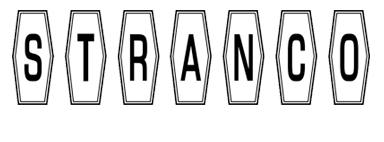Employers in every industry are responsible for providing safe working conditions for their employees. The Occupational Safety and Health Administration serves as an industry regulator to ensure the wellbeing of all working Americans by enforcing its standards. The agency releases its top 10 most cited violations each year. For 2016, machine guarding hazards ranked in at number eight on the list.
What is the machine guarding standard?
When employees work around improperly guarded heavy machinery, they could experience serious injuries, such as amputations, blindness, crushed hands or fingers and burns. This is why machine safeguards are necessary components in keeping workers safe from preventable workplace injuries like these. OSHA mandates that any machine part, process or function should be guarded if it has the potential to injure employees.
Machine guarding hazards are addressed both in the general industry standards, along with longshoring, marine terminals and agricultural industries. Any employer who requires workers to operate heavy machinery should adhere to OSHA machine guarding standards. This way, they will prevent amassing hefty regulatory fines and citations, along with keeping their workers safe from harm.
What are the basics of machine guarding?
One of the basics rules of machine guarding is that any machine component that could cause injury should be controlled or eliminated. According to OSHA standards, machine guards must meet these minimum requirements: prevent contact, protect from falling objects, create no new hazards, allow for safe lubrication, create no interference and remain secure. Regarding the preventing contact standard, OSHA explained that the safeguards must prevent arms, hands and any other part of a workers' body from coming into contact with harmful moving parts.
"Safeguards must also be secure."
These safeguards must also be secure from workers being able to easily remove or tamper with them. Meanwhile, they should also not create new hazards, such as if it has a jagged edge, unfinished surface or shear point. After all, the goal of these safeguards is to protect employees from harm, not present new ways to injure them.
Recognizing hazardous mechanical motions and actions are an important first step for manufacturing employees. Some of these basic types include rotating, cutting, punching, shearing and bending. While employers must protect their workers from harm with machine guarding, they also must provide adequate worker training opportunities and signage to warn employees of potential hazards.
Employee training courses must involve hands-on-training and instruction about how to identify machine hazards, how to protect themselves from preventable injuries, how to use safeguards and under what circumstances safeguards can be removed. Meanwhile, machine guarding training should also cover necessary protective equipment and clothing. Creating a culture of safety at any organization begins with keeping everyone informed.
Recent machine guarding violators
OSHA inspectors spend their time visiting workplaces around the country, looking for violations. Despite this agency's push to prevent machine guarding hazards, some employers fail to follow industry standards when it comes to employee safety. Earlier this year, for example, OSHA issued one repeated and one serious safety violation, with fines amounting to over $81,000 to a Chicago metal container manufacturer for improperly installed machine guards.
Investigators discovered that since the summer of 2015, three workers have suffered amputation injuries as the result of the non-compliance to workplace safety standards. In the most recent case, a machine part amputated a temporary worker's right middle finger tip when he tried to clear a jam.
According to OSHA, amputations are one of the most severe and debilitating injuries for any industry. Not only can the situation itself be traumatizing for workers, but the affected employee may have to spend days away from work or even suffer permanent disability. OSHA's statistics indicate that out of all workplace amputations, 44 percent occurred in the manufacturing sector.
"Amputations are one of the most severe and debilitating injuries."
"Each year, manufacturing workers suffer hundreds of preventable injuries because employers fail to install safety guards properly and train workers in machine safety procedures," said Kathy Webb, OSHA's area director in Calumet City, Illinois. "[The company] needs to review its machines' operations corporate-wide immediately to ensure they have adequate and properly installed safety guards. They must also be sure that workers are using lockout/tag out procedures to prevent them from coming in contact with operating parts."
In another OSHA inspection, regulators issued three repeated and four serious safety violations to an Ohio railroad parts manufacturer after finding the facility continued to expose its workers to machine and fall hazards. These citations amounted to more than $235,879 in proposed penalties, as OSHA cited the company for similar violations back in 2013 and 2014. OSHA officials found that the manufacturer did not install machine guards or develop or implement proper lockout/tag out procedures.
"Companies cited repeatedly for the same safety violations demonstrate a lack of concern for employee safety," said Larry Johnson, OSHA's area director in Columbus, Ohio. "Manufacturing facilities need to take a hard look at machinery operations, guarding and safety training to protect employees from injuries on the job."
At Stranco, we understand the importance of keeping your workers safe from machine hazards. Our team designs and produces ANSI compliance warning labels to meet a variety of needs among industrial and equipment manufacturers. Our labels are printed on premium outdoor grade polyester with a UV inhibiting clear polyester laminate so your employees can easily identify product or equipment safety information.
We offer an extensive standard catalog of warning labels, yet if you do not find what you need, our graphic and engineering departments will work with you to craft custom ANSI Z535 compliant safety labels for your facility. Contact one of our helpful representatives today for more product details or pricing information.

